
James
-
Posts
204 -
Joined
-
Last visited
-
Days Won
49
Content Type
Forums
Gallery
Events
Shop
News
Audio Archive
Timeline
Image Comments posted by James
-
-
Coach Road is shown in blue on the attached 1897 map of Bedlington East End. The road is still there leading to Spring view and the last houses were demolished in the early 1950’s. The East End Church of England school was only about 250 yards from Coach Road so is fair to assume that this is the school in the photo. The school (shown in yellow on the map) was closed in the early 1900’s and the site is now part of Hollymount Square.
-
 3
3
-
-
Most of us will be watching the coronation on Saturday at home, but in 1953, when the Queen’s coronation took place very few families in Bedlington had a tv. Lots of people from the “bottom end’ of Bedlington were at least able to watch the coronation through The Rediffusion shop window. This was a company that sold and rented tv’s and radios and is now a dental practice. The photos are from one of Evan Martin’s books and the 3 girls in the front are, left to right Maureen Brown, Joan Gray (dress with white collar) and Brenda Smith. Behind Joan is her brother Bob Gray.
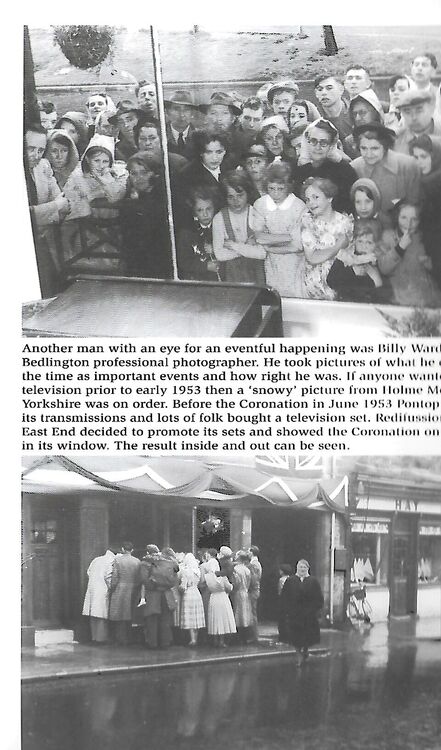
-
 1
1
-
-
'Pop' Short in the Upper Bensham Seam 1955
-
 1
1
-
-
Top right holding banner - Peter Muldoon
2nd from left front row - Jimmy Redpath
Centre front row holding scroll - Anty Thompson
I can confirm Lawrence Thompson and Stuart Young are correct. I recognise the others but cannot remember their names.
They were committee members of the Doctor Pit branch of the NUM
-
 1
1
-
-
The woman at the front with her hands clasped together is Mary Wright, wife of Ernie, the parents of Billy and Mildred Wright
-
Feel free to share any of my photos with other groups to gather as much information as possible about the photos.
-
-
12 hours ago, Andy Millne said:
Doctor Pit? If so, and comparing to other photos, I think they are standing roughly on the site of the current law courts.
They are standing on what would become the Mechanics football field (Millne Park) and is now the car park.
-
 1
1
-
-
I’ve never heard of Bedlington Amateur FC but it’s a great photo with amazing quality. The photo mentions Price’s field at Hollymount and having grown up around Hollymount I looked closely at the photo to see where it was taken and it definitely wasn’t Hollymount. Before Hollymount Square was built there was a field between the Bell’s Place gardens and Hollymount Avenue but not big enough for a football field. At the top right of the team photo you can see the two chimneys of the Doctor Pit so the buildings behind the team are those down Vulcan Place and looking closely through the trees on the extreme right of the photo is the Whitley Memorial School.
The photo I have attached of the school with the newly built houses of Hollymount Square would have been taken in the early 50’s (presumably taken from the church tower) and shows prefab classrooms that were only built in the late 1940’s.
I have marked in green the spot where I am pretty sure the team lined up for the photo. Presumably the photo was taken at the football field where they played so it looks like it was on the field next to the school, part of which by the 1950’s were allotments.

-
 1
1
-
-
1 minute ago, James said:
The photo is taken from No 4 Old Colliery Row looking up towards the Black Bull. The gable end behind Mr Hemsted is No 6 Bell’s Place and this can also be seen in the google maps photo looking at the same view about 100 years later.
The section of Bell’s Place that was demolished in the late 1940’s ran parallel and behind Old Colliery Row. To the right of the row were the toilets, and gardens. There was gas lighting and a couple of outside taps - no electricity.
-
 2
2
-
-
4 hours ago, Canny lass said:
There seems to be an awful lot of gable ends and I can't work out where they could be seen from.
-
This photo taken by Willie Ward shows 3 miners ‘cavilling’. This was a system used by teams and individuals on ‘piecework’ whereby lots were drawn to decide on their workplace. The ‘cavil’ was the workplace number written on the piece of paper. The system prevented management favouring a particular team or individual and also meant that it was the luck of the draw whether you ended up in a section with good or bad conditions which could often affect your earnings.
-
 1
1
-
-
In one of Evan Martin’s books, he says that Easton Homes was built in 1907 and was named after Emily Easton who financed the building of the 12 cottages as well as St John’s Church. She was a director of the Bedlington Coal Company, owners of the ‘Aad Pit’ (Bedlington ‘A’ colliery). The cottages were built for retired miners who had worked for the company for least 50 years.
-
 1
1
-
-
Before they moved to Shiney Row, Andy and Flo Turnbull lived at the “bottom end” in No 27 Bell’s Place with their sons Bill, Bobby and Andy and our family lived near to them. Florence says they kept chickens in the garden at Shiney row. At Bell’s Place they not only had chickens but they also had a pig that the neighbours helped to feed with waste food we called “slops”. I’ll not mention what happened to the pig but I think you can guess!
I have been hoping for years to find a photo of Bell’s Place and I thought that perhaps Frances may have one passed on to her by her grandparents.
Bell’s Place was demolished along with Old Colliery Row in the late 1940’s and Hollymount Square was built on that site.
-
In the photo, No 1 is the first house with the shed in front of it. I assume the shed is in the side garden that Florence refers to. Being the end house it would have been the only one with a side garden. (I think Andy and Flo Turnbull lived there.) The Gardens on the left of the picture were the Doctor Terrace gardens. The Shiney Row gardens can’t be seen – they were on the south side of the row.
-
Shiney Row was numbered the other way; No 1 Shiney Row was nearest Glebe Row and No 49 was nearest the Doctor Pit.
After making the Bedlington Miners Picnic in 1960, Ken Russell came back to Bedlington to film some scenes at Bedlington A colliery (The Aad pit) for his 1969 movie “Women in Love”.
-
 1
1
-
-
In one of the photographs in her book she tells us her maiden name is Mary Bohills.
-
On 22/03/2021 at 18:20, Canny lass said:
This might seem like a daft question but, why did a coal mine need a chimney? What was being burned?
At the Doctor pit, in the early days, the main winder and the John Pit ventilation fan were driven by steam engines. As with all steam engines, each had a boiler in which coal was burnt to produce the steam to drive the engines and each had a chimney high enough to provide sufficient draft to efficiently burn the coal. The chimney of the main winder was 160 feet high and was demolished in 1921 when an electric winder was installed. I don’t know when the John pit fan was converted to electricity but the chimney was demolished in 1952.
-
 1
1
-
-
-
HPW
Before the plant in the photo was built there was an old plant on this site that washed output from the Aad pit. The “new” plant was built on the same site as the old plant and continued to use the same dump. The wash plant in the photo was about 10 year old when the photo was taken but the discard dump as you say had been in use for over 100 years.
The difference with the new plant was that it washed coal from both the Doctor Pit and the “A” Pit. In James Tuck’s book he states that this was part of a modernisation plan at the time of nationalisation of the mines in 1947.
I’ve attached another photo of the “new” plant looking from the other side of the plant.
-
 1
1
-
-
19 minutes ago, Alan Edgar (Eggy1948) said:
@James - cheers James. I couldn't recall having seen them before - on the Bygone Bedlington Facebook group or on here - so I was just curious as Wm ward didn't get a mention on this one. I check out the Dr pit photos as my granda, Martin Henderson (retired in the late 1950's), and a couple of my uncles worked there.
Martin Henderson was a deputy at the Doctor Pit but I'm sure he was still working in the 1960's. His brother George worked at the Aad Pit.
-
I assume you are referring to the 4 photos that have the caption at the bottom “……..working in the Doctor Pit in Bedlington”. These were posted on this site a few years ago (or possibly Facebook) and I made copies of them. They appear to be newspaper cuttings.
This particular photo has an error – Steve Wash should read Steve Welsh.
(You ask if I was related to anyone in this photo. It so happens that one of them was my wife’s uncle.)
-
Photo of two Wastemen at the Doctor Pit taken by Willy Ward. No names unfortunately.
Wastemen were miners who were too old for heavy work and were employed to maintain the return airways – clearing falls of roof, renewing supports etc. and they often carried on doing this work even in their 70’s.
Willy Ward worked at the Doctor Pit till it closed in 1968. He was an excellent photographer and a few of the photos I have posted were bought at his shop on Front Street East. I wish I had got more of them and taken a note of the names. (Many couples would have used Willy to take their wedding photos – we did!)
-
 1
1
-
-
I got this photo at Willie Ward’s shop so I assume it was taken at the Doctor Pit.
The person on the left is holding something I’d forgot about. I think we called it a “shotbox” – can anybody confirm? It was a canister to hold explosives.
The person on the right is holding his carbide lamp. These were lamps with an open flame and were used at the Doctor Pit until around 1955 when they were replaced with electric lamps.

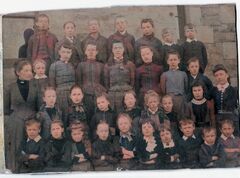
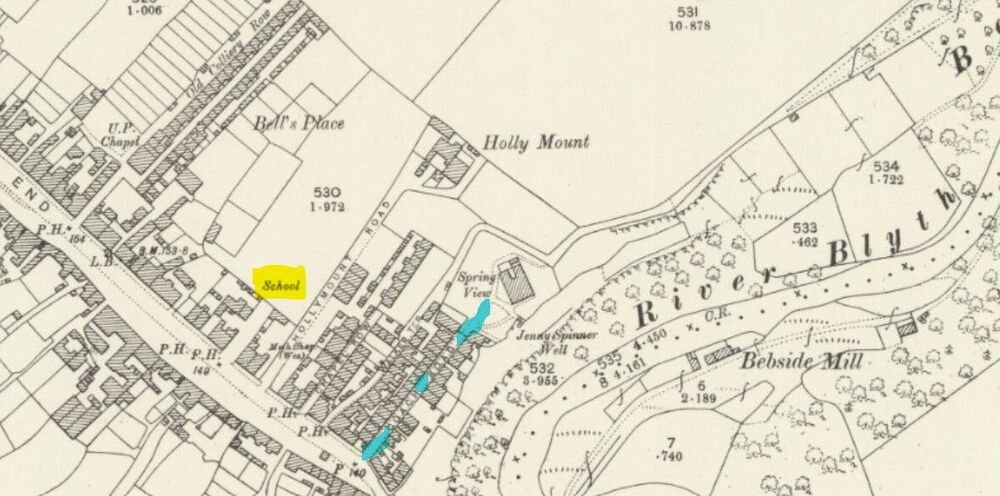
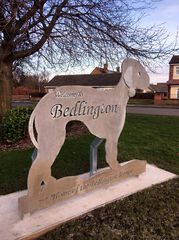
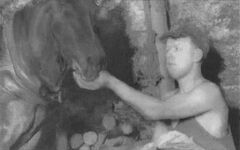
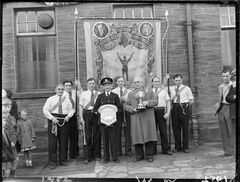
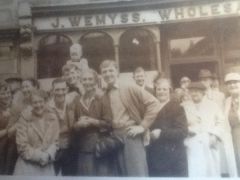
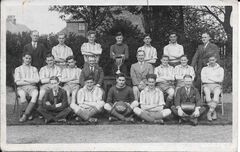

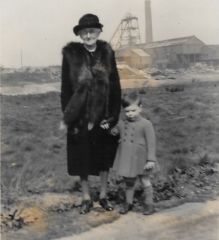
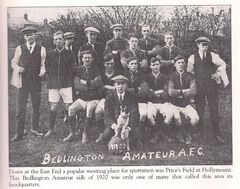
.png.8ed7f3d4753c93e5f45344da507f8d26.png)

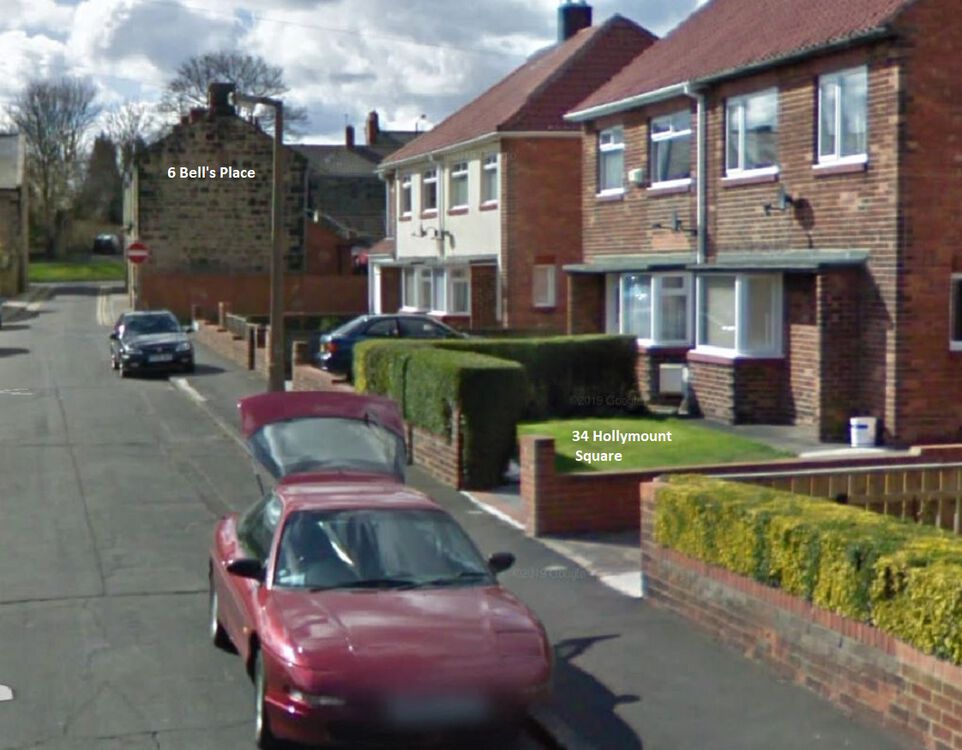
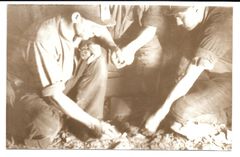
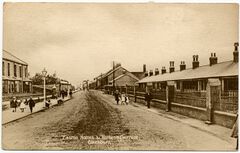

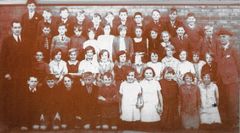
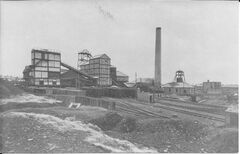
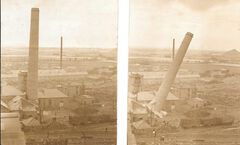

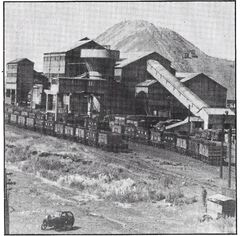


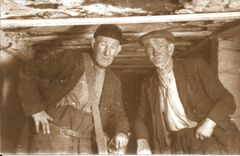
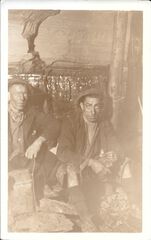
late 1800s school photo
in Historic Bedlington
33Posted
The information attached is from a St. Cuthbert's church history booklet.